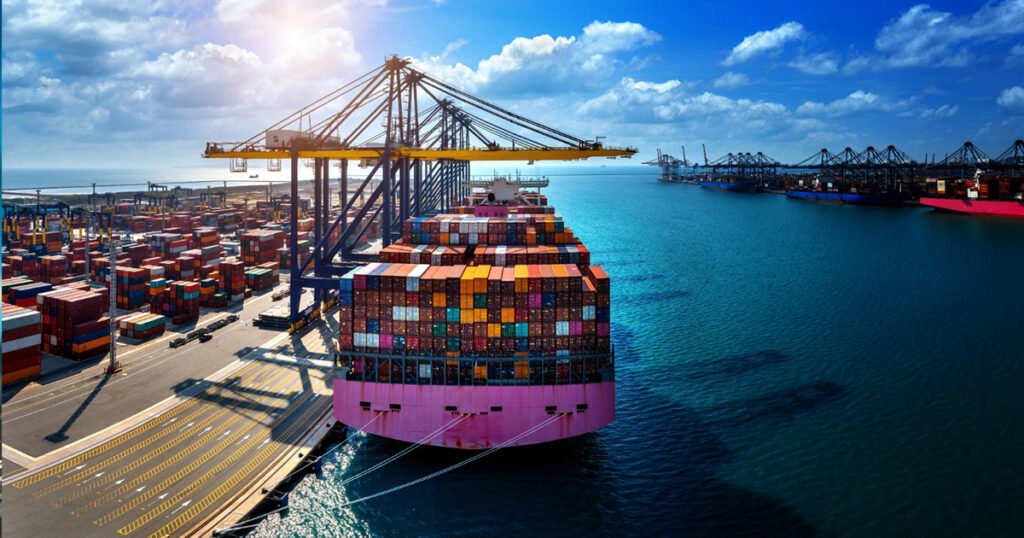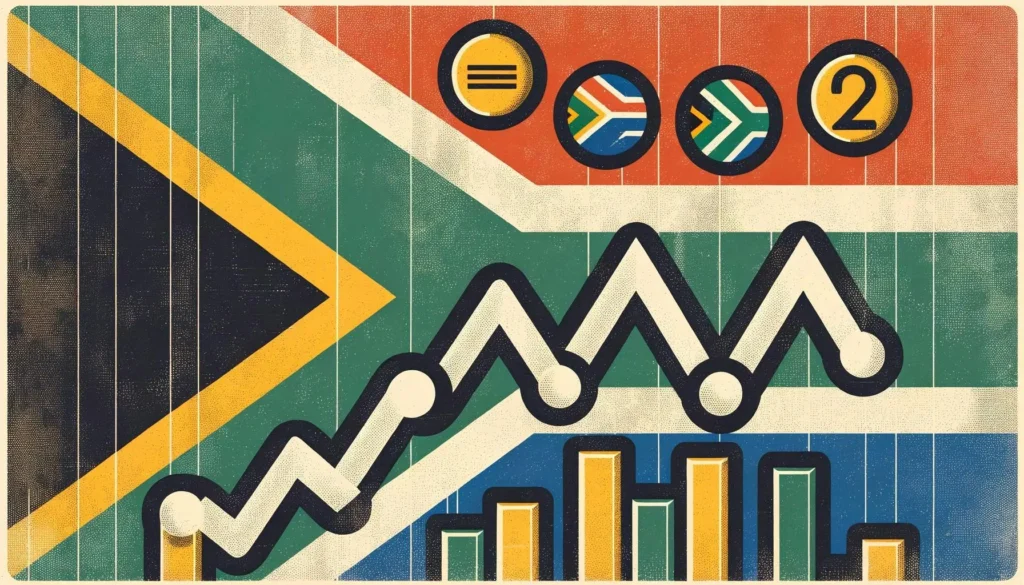In a world where youth unemployment surges and economies grapple with inequality, the answer to South Africa’s crisis might just lie beneath its waves. Often overshadowed by its terrestrial counterpart— the green economy— the blue economy represents a largely untapped source of prosperity and resilience. With South Africa’s unemployment rate hovering at nearly 33%, and youth unemployment nearing a staggering 60%, the stakes could not be higher. But, what if the ocean holds the key?
South Africa, flanked by the Atlantic and Indian Oceans, boasts over 3,000 kilometers of pristine coastline. And yet, much of its oceanic potential remains dormant— sidelined by bureaucratic inertia, structural challenges, and underinvestment. However, a powerful tide is rising. If harnessed sustainably, the blue economy could provide the breakthrough that generations of young South Africans have been waiting for.
According to projections by the African Union, Africa’s blue economy has the potential to generate an estimated $405 billion in economic output and support over 57 million jobs by 2030. With abundant marine resources and a vibrant coastal heritage, South Africa is well-positioned to benefit— provided it takes swift, strategic action.
A Crisis That Demands Bold Solutions
South Africa’s economic malaise is multifaceted— entrenched inequality, sluggish GDP growth, and a legacy of exclusion. Yet none strike more alarmingly than the state of youth unemployment.
Today, millions of young South Africans are caught in a loop of joblessness and hopelessness, fueling social instability and compounding poverty. Coastal provinces such as the Eastern Cape and KwaZulu-Natal, endowed with blue assets, remain economically marginalized. This contradiction is striking— and presents an opportunity for course correction.
President Cyril Ramaphosa’s Government of National Unity, sworn in after the 2024 elections, has reiterated its commitment to structural reform through Operation Vulindlela, a policy engine aimed at unblocking infrastructure bottlenecks and boosting economic competitiveness. But as the country inches toward recovery, the question remains: Can the blue economy provide the missing link?
Import of the Blue Economy
The blue economy refers to the sustainable use of ocean resources for economic growth, improved livelihoods, and ecosystem health. It includes a vast array of sectors— from traditional ones like fisheries and maritime transport to frontier industries like marine biotechnology, aquaculture, coastal infrastructure, and blue tourism.
Unlike extractive economies, the blue economy emphasizes regeneration. It aligns economic development with marine conservation, ensuring that ecosystems continue to provide food, regulate climate, and support livelihoods. For a country grappling with youth unemployment, this is critical. The ocean offers jobs not just in quantity but in variety, from artisanal fishing to cutting-edge marine tech.
From Sand to Silicon: Sectors Ripe for Job Creation
One of the blue economy’s most powerful promises lies in its labor-intensive nature, especially in coastal tourism and fisheries. Already, across Africa, these sectors support more than 49 million jobs. If scaled responsibly— with community co-management, skills training, and low-impact infrastructure—they can absorb vast numbers of low- and semi-skilled workers, offering employment to those currently locked out of South Africa’s formal economy.
Aquaculture, or fish farming, is another fast-growing sector. In a country facing rising food insecurity and dwindling wild fish stocks, aquaculture can provide both nutrition and income. By investing in sustainable hatcheries, feed production, and local supply chains, aquaculture projects could flourish in coastal towns— many of which suffer from high youth unemployment.
Further afield, marine biotechnology offers high-tech opportunities in pharmaceuticals, cosmetics, and nutraceuticals derived from marine organisms. These industries demand scientific research, data analytics, and bioengineering— creating room for the youth to lead innovations through universities, tech hubs, and start-ups.
And then there’s coastal infrastructure development— ports, marinas, eco-resorts, and shoreline protection systems. This opens the door for engineers, construction workers, environmental planners, and transport operators, all of whom are crucial for transforming South Africa’s shoreline into an economic engine.
A Youth-Centric Model for the Blue Economy
But potential alone is not enough. The blue economy must be intentional in including young people— not just as workers, but as innovators, entrepreneurs, and leaders. That starts with investment in training and education. Vocational training centers along the coast could teach skills in boat repair, aquaculture, scuba diving, marine data analytics, and conservation management. Scholarships and seed funding should be extended to youth-led blue startups with scalable solutions.
As the World Bank’s Blue Economy for Resilient Africa Program highlights, strategic marine spatial planning— paired with climate-informed innovation— can unlock “blue enterprise zones”. These hubs would incubate small- and medium-sized marine businesses, integrate climate adaptation strategies like mangrove restoration, and serve as testbeds for marine conservation finance.
Public-Private Partnerships will also be critical. Companies like Sanlam are already investing in ocean-based enterprises, from marine insurance to sustainable fisheries. If scaled, such investments could foster long-term coastal resilience, provide insurance products for fishermen, and open markets for local ocean produce.
G20: A Global Stage for Local Change
As the only African country in the G20, South Africa has a golden opportunity this year. Its presidency of the 2025 G20 Summit offers a platform to spotlight Africa’s 30,500-kilometer coastline— not just as a natural wonder, but as a continental economic strategy. The blue economy should not be viewed as a sectoral initiative but as a national priority— cutting across job creation, environmental protection, food security, and global competitiveness.
This means embedding blue economy policy in national development strategies. It requires coordinated leadership between the Department of Forestry, Fisheries and the Environment, Treasury, Education, and the private sector. The cost of inaction is immense— by 2035, South Africa could forfeit R166.6 billion in GDP contribution and over 600,000 jobs if these opportunities remain untapped.
Crucially, the blue economy also represents a lever to tackle social equity. Many coastal communities are both resource-rich and income-poor. In areas like Port St. Johns, Gansbaai, or the Wild Coast, traditional fishing and eco-tourism are cultural and economic backbones, yet young people there often lack the capital, networks, and infrastructure to participate meaningfully.
Creating targeted programs that give coastal youth access to ocean economy value chains—through microloans, business accelerators, and export cooperatives— could flip this equation. It would allow local knowledge and entrepreneurship to flourish, turning coastal exclusion into inclusion-led prosperity.
Reforms to Support the Blue Wave
To fully unleash the blue economy, South Africa must address the structural bottlenecks that have long held back growth. The International Monetary Fund (IMF), in a recent report, laid out a roadmap: reform labor markets to reduce spatial disparities, professionalize public administration, cut regulatory red tape for SMEs, and streamline licensing for businesses in maritime and fisheries sectors.
The country’s aging logistics infrastructure— ports, roads, and freight corridors— must also be modernized. Unlocking private sector participation in port operations, as outlined in Operation Vulindlela, will not only reduce export-import inefficiencies but also create ancillary blue jobs in warehousing, cold chains, and marine logistics.
Finally, efforts to combat corruption and improve regulatory transparency are vital. Investors—local and international— must feel confident that ocean-based ventures will be protected, supported, and legally secure. Only then can the full potential of South Africa’s maritime economy be realized.
Lessons from Around the Globe
Other nations are already sailing ahead. In the Philippines, community-managed marine protected areas have rejuvenated fish stocks and created thousands of tourism and conservation jobs. In Norway, aquaculture accounts for more than 60% of seafood exports and sustains rural coastal economies. In Kenya, the government has launched the “Blue Economy Implementation Plan,” investing in marine parks, ocean research institutes, and coastal infrastructure.
South Africa can learn from and adapt these models, forging a uniquely African path that combines cultural heritage with scientific progress.
The youth are not just South Africa’s future— they are its present. The ocean economy offers them not charity but opportunity. It speaks to the promise of dignity through work, of livelihoods tied to sustainability, and of national pride through innovation.
But this promise can only be kept if government, business, academia, and communities work together. Universities must align curricula to marine industries. Banks must tailor financial products for blue SMEs. Government must offer incentives for sustainable ocean projects. And coastal youth must be empowered with the tools, skills, and capital to lead.
Catching the Blue Wave
The blue economy is not just about fish, ships, or tides. It’s about hope! It’s about redefining growth to be inclusive, regenerative, and future-focused. It’s about a generation of South Africans— young, eager, and resilient— who are ready to build something extraordinary, if only given the chance.
The tide of opportunity is rising. Will South Africa ride the wave— or let it slip through its fingers?
As the G20 Summit looms and South Africa charts its post-pandemic recovery, the moment is ripe to turn coastal potential into national prosperity. A Blue Economy Pact— one that integrates youth, ecosystems, and innovation— could set the country on a transformative path. With its coastline as a compass, South Africa can sail toward a future where jobs are abundant, ecosystems are thriving, and no young person is left adrift.









